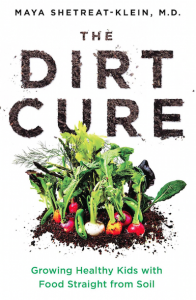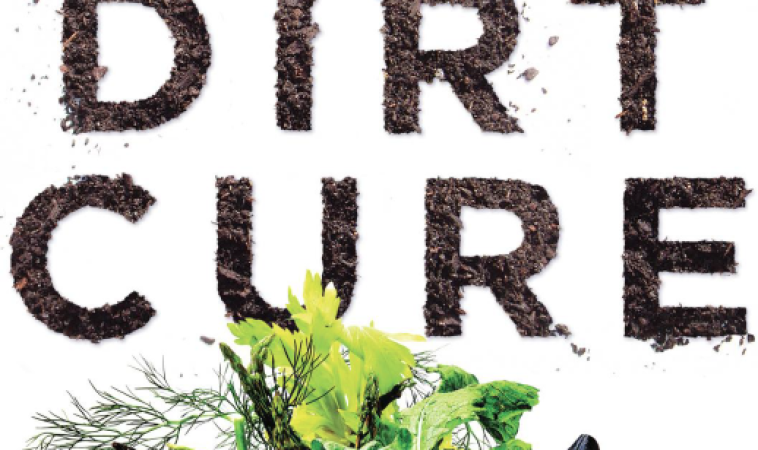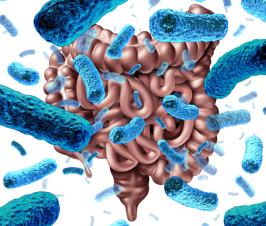Q&A with Dr. Maya Shetreat-Klein
NaturalPath is thrilled to bring you this Q&A with Dr. Maya Shetreat-Klein, MD. She is an integrative pediatric neurologistwho is passionate about with a medical degree from Albert Einstein College of Medicine, where she was awarded the Edward Padow Award for Excellence in Pediatrics and graduated with a Special Distinction in Research in Child Neurology for her  original work on autism. Dr. Shetreat-Klein completed the University of Arizona’s two-year Fellowship in Integrative Medicine, founded by Andrew Weil, M.D., and is now a member of the faculty. She teaches integrative neurology at Albert Einstein College of Medicine, New York Medical College, and the University of Medicine and Dentistry of New Jersey.
original work on autism. Dr. Shetreat-Klein completed the University of Arizona’s two-year Fellowship in Integrative Medicine, founded by Andrew Weil, M.D., and is now a member of the faculty. She teaches integrative neurology at Albert Einstein College of Medicine, New York Medical College, and the University of Medicine and Dentistry of New Jersey.
She has been interviewed and quoted on Dr.Oz, NPR Marketplace, The New York Times Magazine, WCBS-TV News, and WABC-TV News and has partnered with Sen. Charles Schumer in promoting legislation for reducing toxic exposures in childhood. Perhaps her most valued work is seeing patients at her own integrative practice in New York City, where she also lives with her family, dog, and eight chickens.
In her new book, The Dirt Cure: Growing Healthy Kids with Food Straight from Soil,she discusses how conventionally produced food is harming your children’s health, and what we can do about it. She also presents an easy-to-follow nutrition plan to build up their digestive system, immune, system, and brain.
How did you get involved in integrative medicine?
I actually decided to go to medical school because I saw Bill Moyers’ special on Healing and the Mind when I was in college, and decided that I wanted to practice psychoneuroimmunology, as featured on a segment of that show. And throughout much of my training, I was the one asking “Why” when no one else was (and often getting in trouble for it!) By the time I finished my training–medical school, residency, and fellowship–I discovered there was no such thing as psychoneuroimmunology. So I set out to create it myself. Along the way, I studied food, agriculture, soil science, the communal microbiome, ecology, botanical medicine, and many other ways to understand how our bodies interact as part of a greater superorganism.
What is the dirt cure? And what inspired you to write this book?
The Dirt Cure is threefold: It’s allowing kids to be exposed to germs and microbes. It’s feeding them fresh, unprocessed food from healthy soil. And it’s making sure that kids spend plenty of time outdoors in nature. The Dirt Cure explains how the health of our inner terrain reflects the health of the terrain around us. I wrote the book because so many children are becoming chronically ill, but the treatments we are using are not effective at helping children them to heal. I wanted people to know that there is science that tells us that there is another way, and to empower parents, educators and health care providers to use it to prevent or reverse health issues in children and their families. We have also started the Terrain Institute to train people in The Dirt Cure approach in much more depth.
What is the problem with being too “clean”?
We actually need exposures to microbes. We think we are protecting children by sanitizing them, but in fact it is the opposite. “Germs” is just a pejorative term for microbes. Consider: we have 3-4 pounds of microbes—bacteria, viruses, fungi, even parasites—in our digestive tracts, where they help us digest our food, regulate our immune systems, produce neurotransmitters, and make us smarter, more focused, and happier. A recent study showed that children exposed to bleach cleaners are actually 20% likelier to have infections like chronic coughs or the flu. Many hand sanitizers contain toxic triclosan, even though studies show that soap does just as good a job.
Exposure to microbes can be good. In most cases, it’s not the germ itself that’s the problem; it’s the health of the person who has the germ. Small infections are opportunities for the immune system to flex its muscles, but we act like they are unequivocally bad—we jump to medicate with Tylenol and ibuprofen or antibiotics right away. Think of the immune system learning in terms of your learning to play the violin: You can’t expect to play the violin well at a performance if you always bring someone in to practice for you, or have your hand slapped away every time you try to play! Yet that’s what we are doing to children’s immune systems.
What are the biggest immune challenges facing children today?
Our immune systems are very social and they want to meet and greet all sorts of things every day: food, microbes, dirt. When their interactions are limited, they get bored and cause trouble. We’ve known for some time that children who grew up on farms develop fewer allergies and asthma. We thought it was due to something called the Hygiene Hypothesis, which states that children are so sanitized that it’s causing them to be chronically sick. And it’s true, with a twist. It turns out that researchers found that an urban apartment had the same number of microbes as the farm. But the difference was that the microbes on the farms were MORE DIVERSE. Eating diverse foods help prevent allergy for the same reason—because it satisfies the immune systems social needs. Biodiversity in microbes, in our food, and in our soil is the key to healthy guts, immune systems, and brains.
What role does resilience play in health? How do you build resilience?
Resilience is the ability to bounce back from the inevitable hurdles–infections, toxic exposures, injuries, emotional stressors– that they face. Children who have good nutritional reserve are the most likely to be healthy and stay healthy.
While some children are lucky with their genetics and can make do with very little in the way of nutrients–I say these children have “Coke and Twinkie” genes–most of us mere mortals require plenty of nutrients–and minimal amounts of synthetic chemicals–for our bodies to function optimally. Children who eat food that’s processed in ways their bodies haven’t evolved to recognize or process are more vulnerable, and more likely to become allergic or chronically ill. And consider that an allergic child has an immune system that’s occupied with attacking things it shouldn’t–like fighting food, or itself–may not be able to dedicate the resources to fight infection effectively.
On the other hand, children who are well-nourished with nutrient-dense foods grown in rich soil have the tools they need to be resilient in the face of infection and other stressors. These children are even more likely to be healthy if they’re also given opportunities to be outdoors and exposed to varied amounts of diverse microbes, which strengthen and balance their immune systems. And ultimately, each time a child overcomes an infection, it is stronger and more resilient the next time an infection comes round.
What are some other benefits from being exposed to dirt?
One teaspoon of soil has as many microbes as people on our planet, and soil contains 25% of the Earth’s biodiversity. So, soil is a treasure trove of microbes known and not yet known. Microbes found in soil called Mycobacterium vaccae can boost serotonin in ways similar to pharmaceutical anti-depressants–and enhance cognition and reduce anxiety to boot. Certain strains of Clostridia, a bacteria found in soil, induce the body to produce proteins that prevent anaphylactic reactions. Another microbe found in soil is being developed into a new antimicrobial that does not have issues of resistance that traditional antibiotics have. It seems that the answer to many of our health problems are in our soil.
What are the benefits of being out in nature?
Children who spend time in highly natural settings, like forests or specially designed playgrounds, have healthier brains and bodies than those spend time in less natural settings. Time in nature boosts anti-cancer proteins, and improves stress levels, sleep, mood, focus and executive function. Children who spend time outdoors are also smarter, more creative, more focused perform better on tests, and are more compliant. Being exposed to hours of natural sunlight each day helps to prevents near-sightedness.
Many acknowledge the tremendous data demonstrate that children function better when they spend lots of time outdoors on a regular basis, but we don’t actually apply this research in practice by changing how children spend their days. Most kids are indoors all day for school, with maybe 20 minutes of recess, and then are inside doing homework all evening to get a couple of hours of screen time as a reward. Yet we may be medicating many kids for problems that could be more effectively treated by making mud pies, jumping in piles of leaves, gardening, or hiking every day.
What should we be eating? Does organic, non-gmo, etc. matter?
Organic food is very important to help protect children’s digestive, immune and neurological health. Roundup, the most commonly used pesticide in the US, was initially patented as an antibiotic (in the form of its active ingredient, glyphosate). Traces of Roundup are ubiquitious in soil and water, and also in our bodies–including in breastmilk samples. MIT researcher Stephanie Seneff has found that several chronic illnesses including kidney disease and the explosion of celiac correlates with the increase in use of Roundup in the food supply. Other studies have shown that children who eat conventionally grown food have higher levels of urinary pesticide metabolites, and that the higher their pesticide metabolites, the more likely they are to have ADHD symptoms. Children put on an organic diet had the metabolite levels drop within just a few days. Pesticides are destructive to the soil microbiome, which affects the health of plants, animals who eat plants, and humans who eat those animals and plants.
I don’t recommend eating GMO food. At this time, the most commonly used GM crops are modified to withstand very high levels of pesticide application because pests continually become more and more resistant. In addition, GMO has never been studied and shown to be safe because it was automatically classified as GRAS (generally recognized as safe). This was considered a political coup on the part of the biotech industry, because there is no reason to assume that GMO crops are exactly the same as conventional crops that our bodies have evolved with for millennia. Injecting foreign gene cassettes from other plants or even species into a crop doesn’t include the necessary regulating genes as well, so these foreign genes can become “promiscuous” and produce unanticipated, foreign proteins. This happened when Brazil nut genes were used in GM soy in the UK. Many nut-allergic people had anaphylactic responses to soy, only to discover that they were exposed to nuts through GM soy. This may be happening in a number of ways that are far less obvious in the short term. The only way to be non-GMO in the US is to buy certified USDA organic food, because GMO is not labeled (even though the vast majority of Americans want labeling!).
The less we feed children foods that challenge and stress their bodies, the healthier they will be. The more we feed children food that nourishes them, the healthier they will be.
How much time should we be spending outside? What is forest bathing?
Our time spent outdoors has been progressively shrinking over the past decades (as screen time has increased dramatically). Children have been affected the most dramatically. Yet recent studies suggest that nearsightedness has increased significantly over this time. At one point nearsightedness was thought to be primarily genetic, but the incidence of myopia in young people in some populations shot up so much that 97% of young men in Korea are nearsighted. An epidemic can’t be explained only by genetics, so researchers began to investigate what other factors may have played a role. Entirely by accident, they found that time outdoors had a strong protective effect on vision, preventing nearsightedness. They recommend three hours outdoors per day in children for optimal vision!
Forest bathing is a preventive medicine technique implemented and studied in Japan, but all it really means is peacefully immersing yourself in the beauty of the forest on a regular basis. It turns out that forest bathing improves sleep, cognition and mood, but also has a wide range of physiological benefits: decreased cortisol levels, increased immune function, lower inflammatory markers, and boosts in anti-cancer proteins. And all you have to do is spend time in the forest. Win-win!
What are a few of your favorite tips parents can implement to keep their children happy and healthy?
(1) Get nourished. Know where your food comes from. Start by eliminating processed foods from their children’s diets as much as possible, and replace it with fresh, nutrient-dense foods that comes directly from soil instead of packages. Avoid shopping in supermarkets, especially with your kids, but do bring your children to farmer’s markets or farms to buy food. Always try for USDA Organic or biodynamic, Demeter-certified products to avoid exposing your child to traces of pesticides, hormones, and antibiotic. Consider growing some of your own, from herbs on the windowsill to a community garden to start to keeping a few chickens for eggs.
(2) Get outside: play sports (on grass, not artificial turf) or make mudpies, jump in leaves, go snowshoeing, get binoculars and spot birds, walk your dog in a state park, go geocaching in the forest, or take your book or homework outside.
(3) Get germy: Don’t fear fever, but do learn to support your child’s body with plenty of rest, good healing foods like green veggies for a bit of bitter, soups and bone broths with maitake and shiitake mushrooms, teas with a spoon of raw honey, and daily doses of elderberry syrup which help fight flus and colds. (Recipes for many of these are included in the book!) Minimize the use of fever-reducing meds, stop cleaning with bleach and toss out your hand sanitizer and air fresheners and use good, old fashioned soap.
(4) Get organized: Let your educators and legislators know that we need to get children (and adults) outside much more. They need to learn about food and agriculture, and nature and ecology. Let them know that you value green space, wilderness, and clean air, water and soil.

















